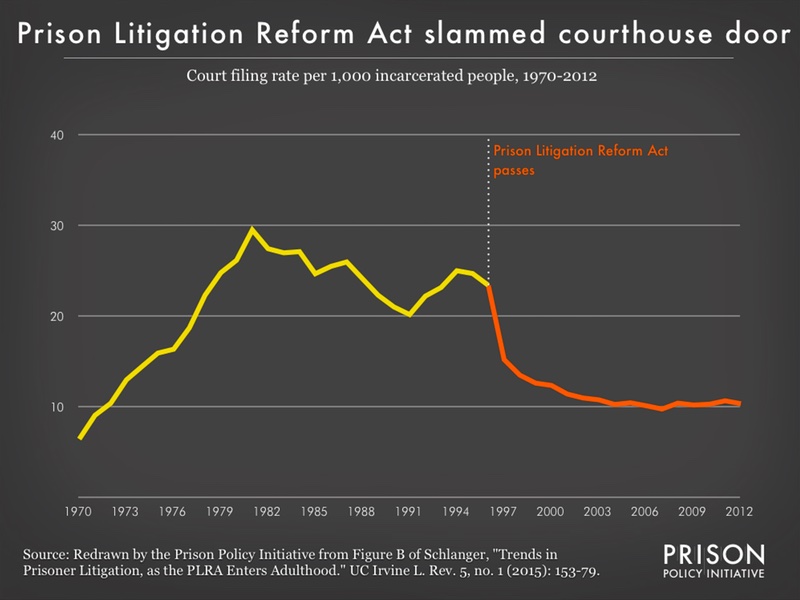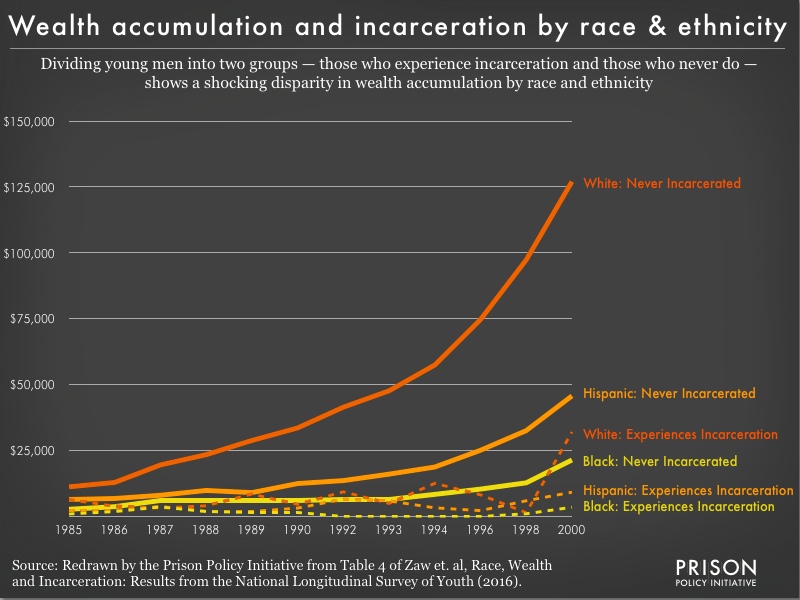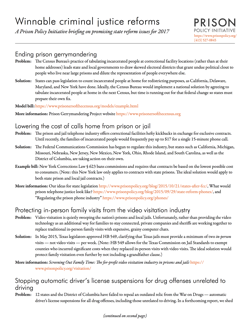The multi-million dollar market of sending money to an incarcerated loved one
Private companies amassing monopoly contracts, creating potential to rake in $172 million from friends and family sending money to incarcerated loved ones.
by Stephen Raher, January 18, 2017
As with many areas of government, prisons and jails are increasingly shifting costs to those who can least afford it: incarcerated people and their families. In correctional facilities, this often takes the form of copays for medical care, forcing incarcerated people to purchase clothing or hygiene items, and cutting food service in favor of for-profit “canteens.” Because most incarcerated people lack money to cover such expenses, this means that family members must frequently transfer money to “inmate trust accounts.”
Historically, families could send money to an incarcerated relative’s account by simply mailing a money order. But private companies saw an opportunity to use these accounts as a potential source of profits. For an upcoming report, we set out to find the answer to a seemingly straightforward question: How much do these companies earn off of money transfers? It’s hard to say, because there is no publicly-available data that gives a complete picture; however, certain limited data can be used to arrive at a rough estimate.
Four states have published data on the volume of money transfers in their state prison systems. This data covers Nevada, Ohio, and Wyoming (all calendar year 2011), and Pennsylvania (2014). Dividing the total amount of transferred funds by the states’ respective prison populations yields average annual transfers of $737 per incarcerated person. Multiplying this average amount by the total population of all state prisons (in 2016) would yield annual transfers of $995 million.
But the amount of money transferred doesn’t tell us how much money the companies make on the process. The difficulty in estimating fee revenue comes from the fact that the amount of the transaction fee varies among jurisdictions. In addition, some jurisdictions may still allow family members to send funds for no fee through the mail; while other states may charge a fee for payments by mail, or simply prohibit no-fee options.
Direct evidence of fee revenue is available for JPay, Inc., one of the largest payment processors for prisons and jails. JPay is currently a subsidiary of telecommunications firm Securus Technologies, which is owned by private equity firm Abry Partners. In an April 2015 presentation to potential lenders, Securus stated that in 2014, JPay made $53 million in fees (page 49) on transfers of $525 million (page 38). This suggests an average fee of 10% (i.e., $53 million ÷ $525 million = .10).
If, as stated above, the total amount of state-prison money transfers is $995 million per year, then with fees at 10%, payment processors could potentially make up to $99 million in fees, assuming every prison system in the country privatized money transfer services and eliminated no-fee options. This aligns precisely with the Securus/JPay investor presentation, which estimates the total market for money transfers in state prisons to be worth $99.2 million in corporate revenue (page 45).
My discussion so far has not mentioned county jails and the federal prison system, because information about money transfers in these settings is even more difficult to find. In fact, some of the only information available at this time is Securus’s estimate of the total potential market. In 2015, Securus told potential investors that the total potential fee revenue from county jails and federal prisons was $58 million and $15 million respectively.
Notably, the most lucrative money transfer market may not even involve correctional facilities. Among the proliferation of user fees being imposed on the poor are fees levied on people serving time on probation or parole. Processing those payments means lots of money for companies like Securus/JPay. In fact, Securus believes that it if it obtained contracts for every state, federal, and local prison/jail in the country, it would be able to earn up to $172 million in fees. In contrast, the company believes that the total market for probation- and parole-related payments is worth nearly $300 million in fees.
Governments process hundreds of millions of dollars of payments every day. In the context of tax payments, court filings, license applications, and other types of user fees, agencies have created innovative no-cost options (including electronic payments) that facilitate quick, efficient transfers. But in the correctional setting, administrators have largely ignored these innovations, instead opting to outsource this function to private companies seeking to profit. As a result, money transfers are yet another way in which private companies profit off of families and friends seeking to support their incarcerated loved ones.
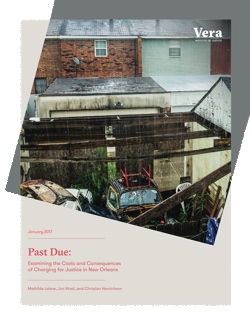
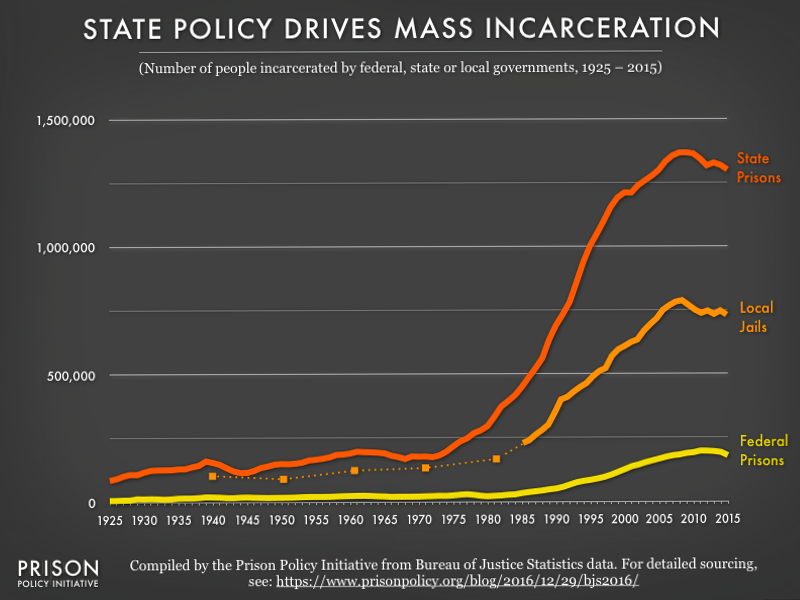
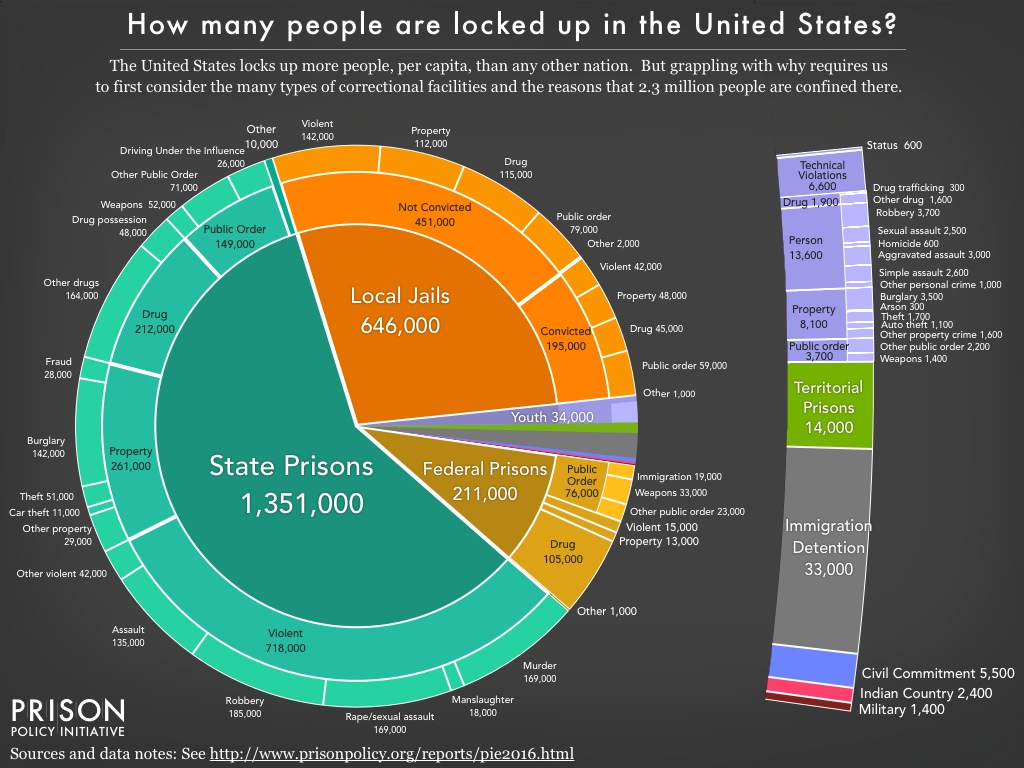
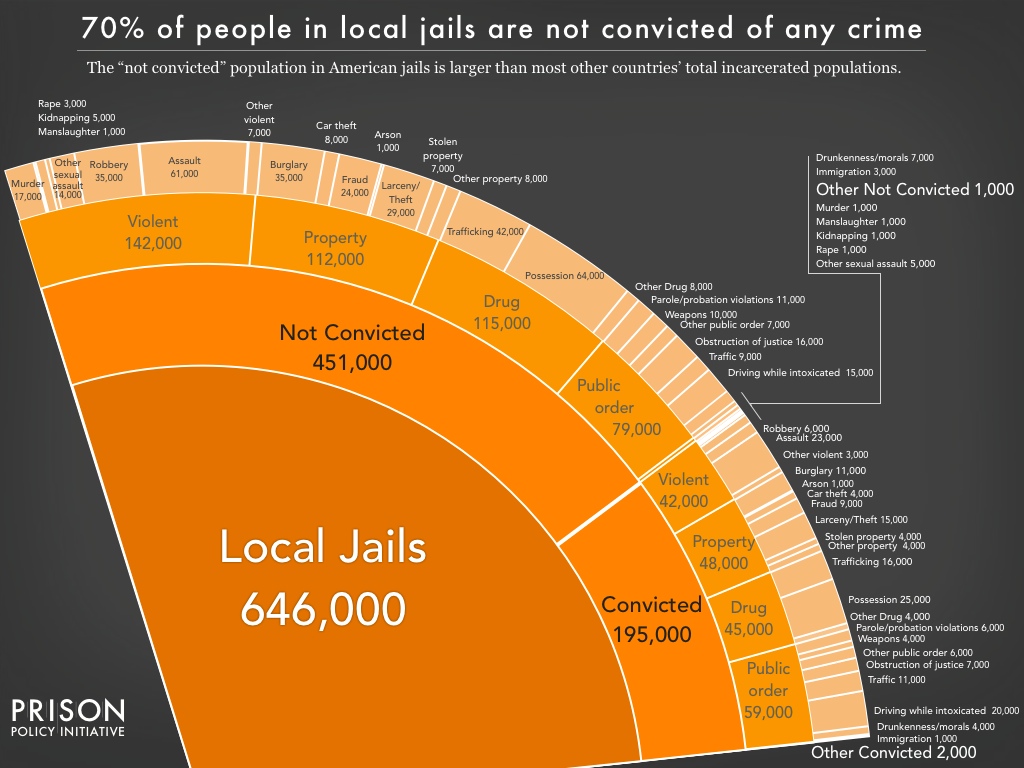

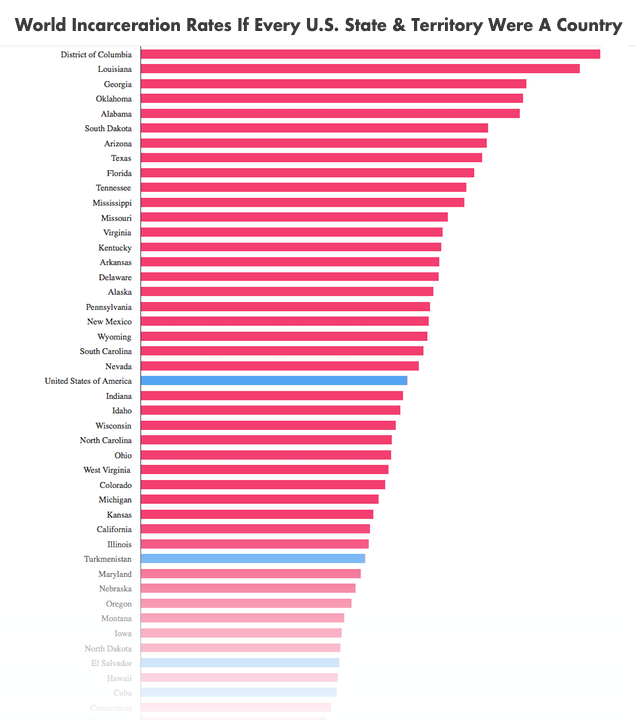
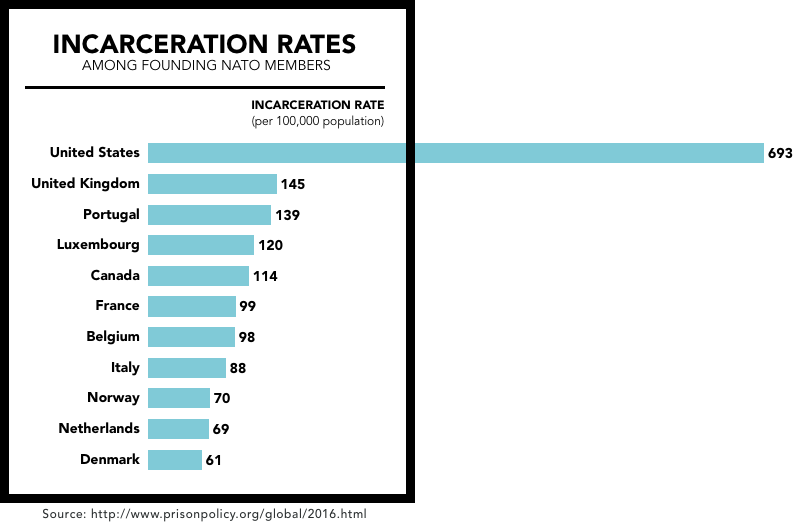
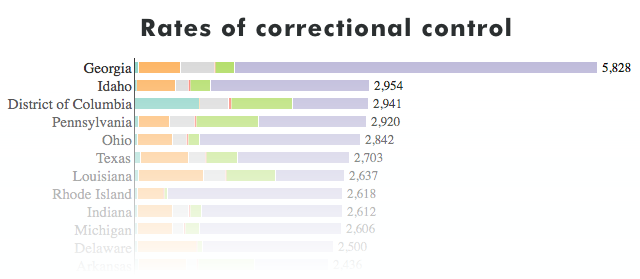
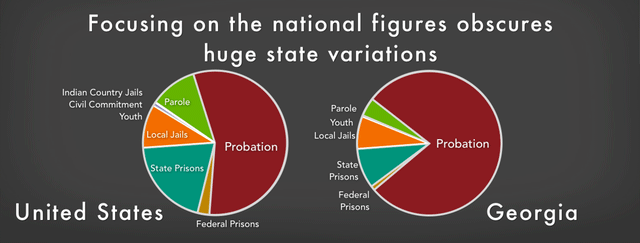 Thinking of the U.S. criminal justice system as one system can be a mistake. There are 50 state systems, plus one in each of the approximately 3,000 counties and often separate systems in the approximately 30,000 municipalities. These differences matter a great deal.
Thinking of the U.S. criminal justice system as one system can be a mistake. There are 50 state systems, plus one in each of the approximately 3,000 counties and often separate systems in the approximately 30,000 municipalities. These differences matter a great deal. 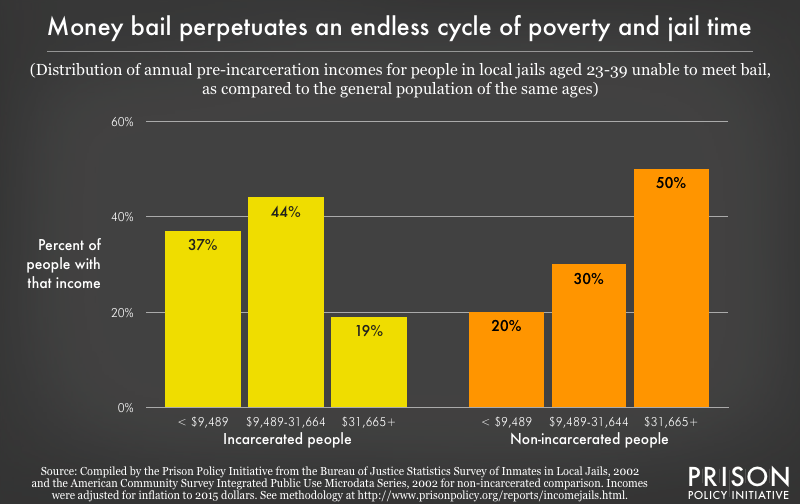 People in local jails unable to meet bail are concentrated at the lowest ends of the national income distribution, especially in comparison to non-incarcerated people. As this graph shows, 37% had no chance of being able to afford the typical amount of money bail ($10,000) since their annual income is less than the median bail amount.
People in local jails unable to meet bail are concentrated at the lowest ends of the national income distribution, especially in comparison to non-incarcerated people. As this graph shows, 37% had no chance of being able to afford the typical amount of money bail ($10,000) since their annual income is less than the median bail amount. 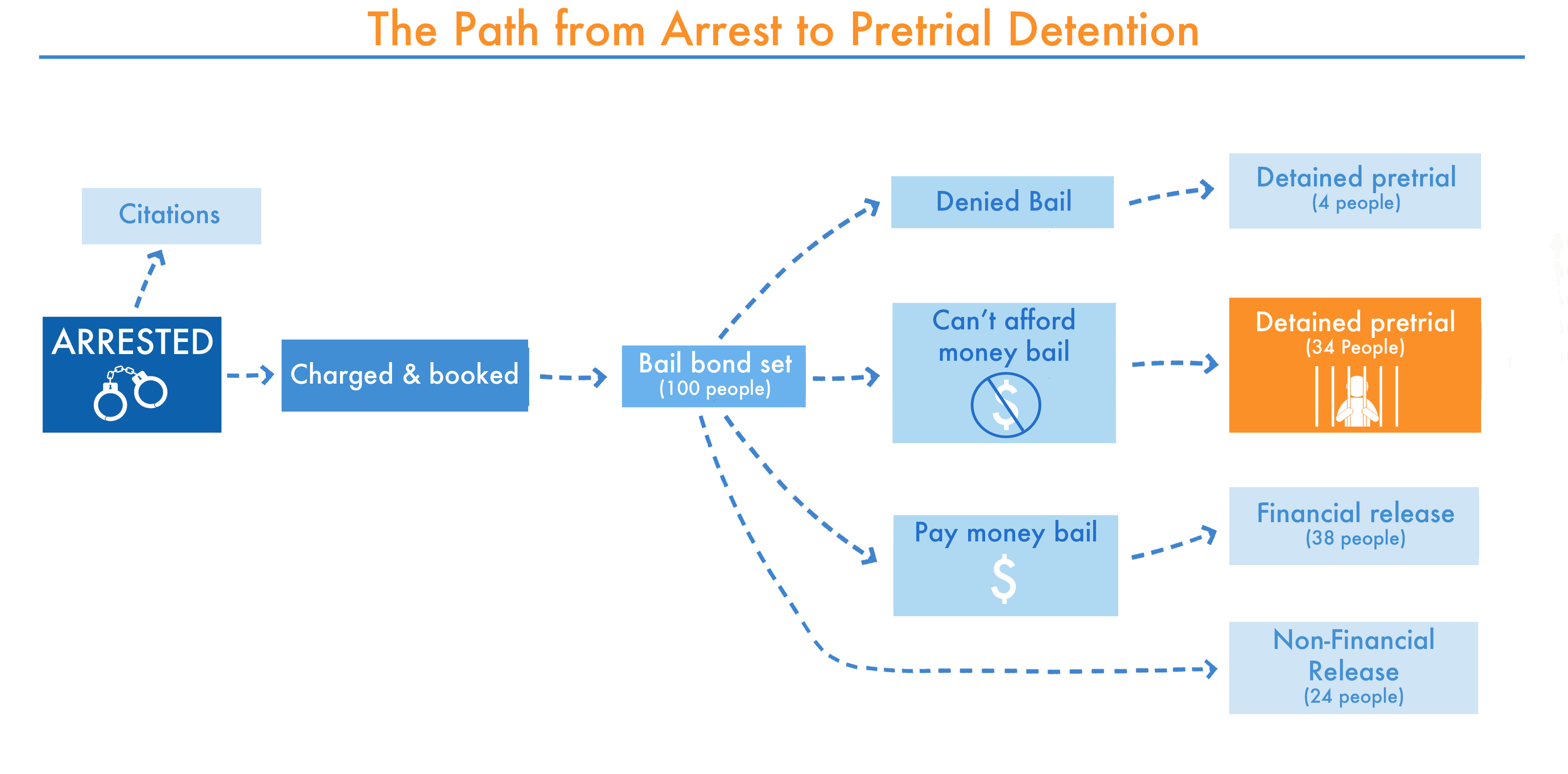 Since the 1980s, there has been a significant, nationwide move away from courts allowing non-financial forms of pretrial release (such as release on own recognizance) to money bail, although this does vary substantially depending on jurisdiction. This chart illustrates the possible paths from arrest to pretrial detention. Almost all defendants will have the opportunity to be released pretrial if they meet certain conditions, and only a very small number of defendants will be denied a bail bond, mainly because a court finds that individual to be dangerous or a flight risk. The only national data on pretrial detention that we are aware of comes from the Bureau of Justice Statistics’
Since the 1980s, there has been a significant, nationwide move away from courts allowing non-financial forms of pretrial release (such as release on own recognizance) to money bail, although this does vary substantially depending on jurisdiction. This chart illustrates the possible paths from arrest to pretrial detention. Almost all defendants will have the opportunity to be released pretrial if they meet certain conditions, and only a very small number of defendants will be denied a bail bond, mainly because a court finds that individual to be dangerous or a flight risk. The only national data on pretrial detention that we are aware of comes from the Bureau of Justice Statistics’ 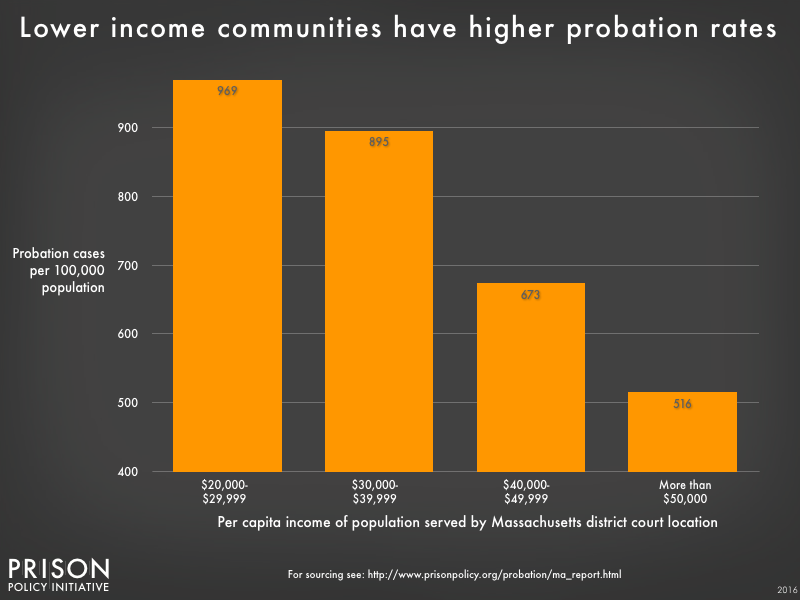 The District Court locations were grouped by the per capita income of the towns and cities they each serve. Probation rates are higher in court locations that serve populations with lower incomes.
The District Court locations were grouped by the per capita income of the towns and cities they each serve. Probation rates are higher in court locations that serve populations with lower incomes.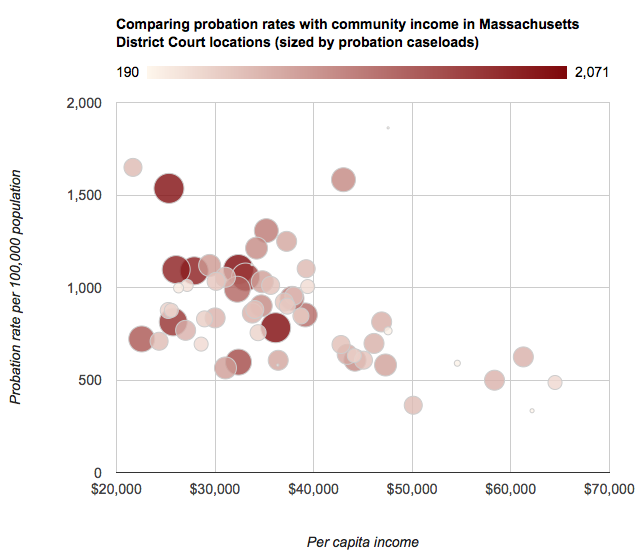
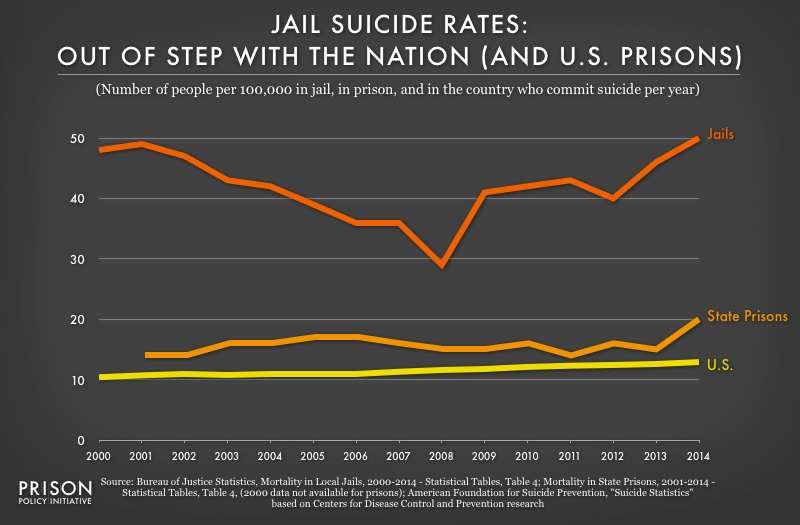
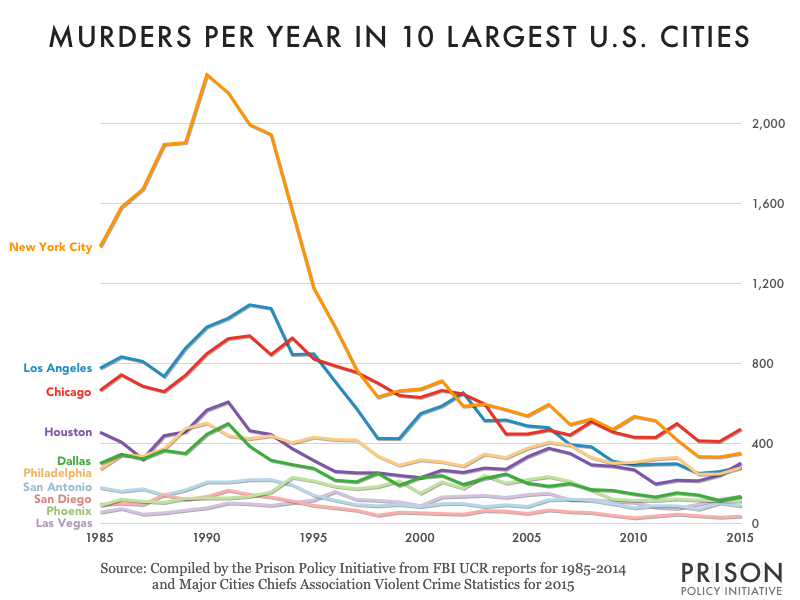 For most cities, murder is much lower now than during the 1980s or 1990s. The data for 1985-2014 comes from the FBI. The FBI has not published the 2015 full year data yet, so we relied on data from the Major Cities Chiefs Association, which historically is very similar if slightly higher than the FBI’s figures. For that reason, this graph may overstate the increase in murder in 2015 in these cities.
For most cities, murder is much lower now than during the 1980s or 1990s. The data for 1985-2014 comes from the FBI. The FBI has not published the 2015 full year data yet, so we relied on data from the Major Cities Chiefs Association, which historically is very similar if slightly higher than the FBI’s figures. For that reason, this graph may overstate the increase in murder in 2015 in these cities.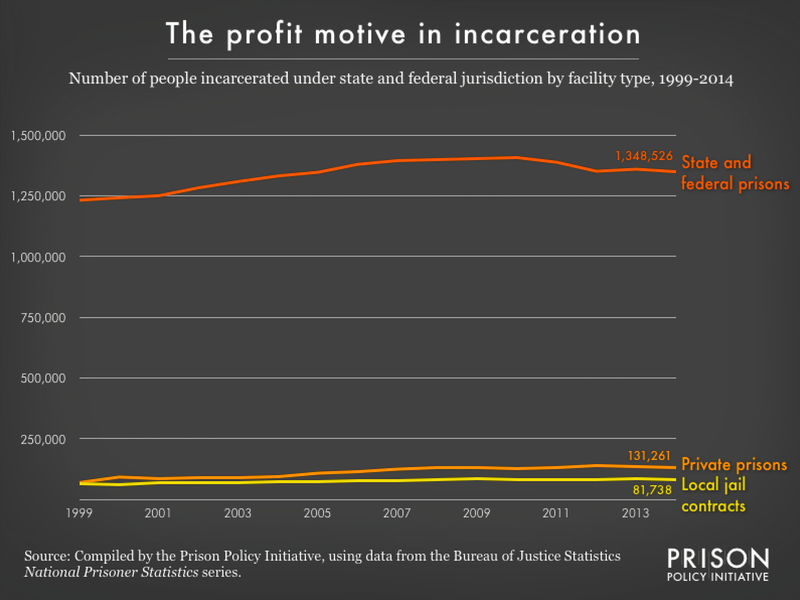 Since 1999, private prisons and local jails have housed roughly the same number of those serving state and federal prison sentences. But when those interested in justice reform talk about profiting off of mass incarceration, they almost always leave local jails out of the conversation.
Since 1999, private prisons and local jails have housed roughly the same number of those serving state and federal prison sentences. But when those interested in justice reform talk about profiting off of mass incarceration, they almost always leave local jails out of the conversation.